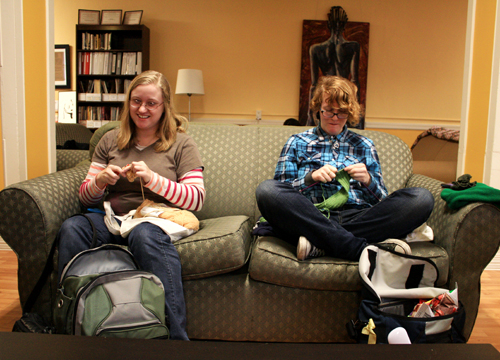Union members lobby for pay increases
With shouts of “Fairness! Now!” a lunchtime rally of the Service Employees International Union, Local 503 marched its way Friday from the park blocks to the Smith Building to air grievances with the Oregon University System at a meeting of the Oregon State Board of Higher Education.
“OUS tries to divide us!” said Rich Peppers, union executive director, addressing the crowd in the park. “We are the people who register new students, maintain the grounds – we do the unseen work. It’s you being at events like this that will get them
to notice and listen to us.”
Classified employees work for the state and fill positions in almost every area of the university, from maintenance to library services to health care.
SEIU503, which represents 900 classified employees at Portland State, about 500 of whom are active members, is currently negotiating with OUS for a new two-year contract. According to organizers, the rally drew an estimated 120 members and supporters whose primary remaining concern is a proposal which would effectively increase the salaries of nurses and accountants on only two of the state’s seven campuses, PSU and the University of Oregon.
At the heart of the issue is the concern of both universities that wages are not competitive enough to attract and hold onto talented, well-trained workers in certain areas such as campus health clinics.
“I participate in interviews and hiring and see many people turn down jobs they like and want because they can get more money elsewhere,” said Alise Quayle, registered nurse at the PSU Center for Student Health and Counseling.
However, the problem is not specific to certain campuses or job classifications, according to union leaders. “Almost every job category in OUS is behind market. This is a statewide problem,” said PSU carpenter Michael Ellis, bargaining delegate for PSU workers.
Although the union wants the raises, what OUS calls “monthly recruitment and retention” bonuses, for these workers, it is fighting to see them applied to nurses and accountants statewide.
“We think we should pay people equal pay for equal work. The number of workers whom management proposes to leave out [across the state] is small, so the marginal cost to the system of including them is small,” said Ellis before the assembled presidents of Oregon’s public universities on Friday. The union worries that smaller campuses and OSU would begin to lose their best employees to PSU and U of O if pay were higher at these schools. “Our members feel these kinds of proposals are divisive and send a bad message to all of us, especially those who’ll be left behind.”
The union and OUS have been in negotiations for several months; their previous contract ended on June 30 but was granted an extension by OUS till the end of this month while bargaining continues. “We did agree to extend the contract – we are trying to be amicable,” said Jay Kenton, vice chancellor for finance and administration. “I’m optimistic that we can bring this to a positive end.”
The union acknowledges that negotiations have thus far gone smoother than any in the past ten years, with OUS already agreeing to make several salary reparations to state workers who, in 2003 under pressure from the state legislature, agreed to a contract that froze their salaries for two years. However, many remain frustrated by the process. “We want them to understand that they’ve been balancing the budget on the backs of the workers,” said painter and PSU Union President, Zoe Birkle.
Since Oregon state workers affiliated with the SEIU in 1980, they have held two statewide strikes, in ’87 and ’95. Both ended with victories for the union. At the rally, union leaders were careful to make it known to management that they are not talking strike right now. “But we’re reminding them that we have gone that far before, too,” said Peppers. Bargaining resumes on July 23.




